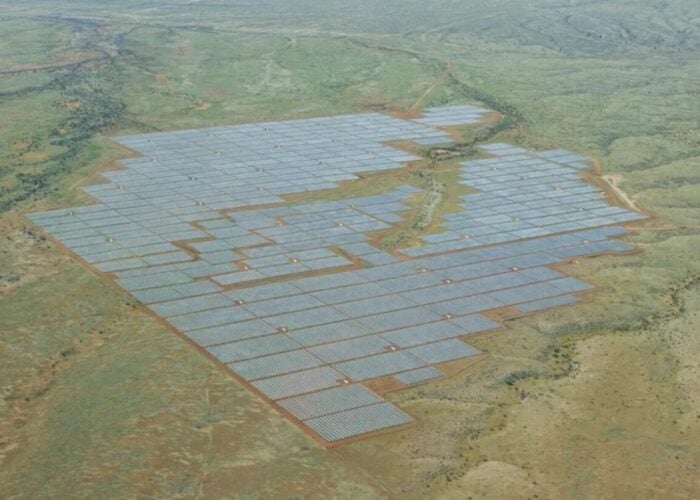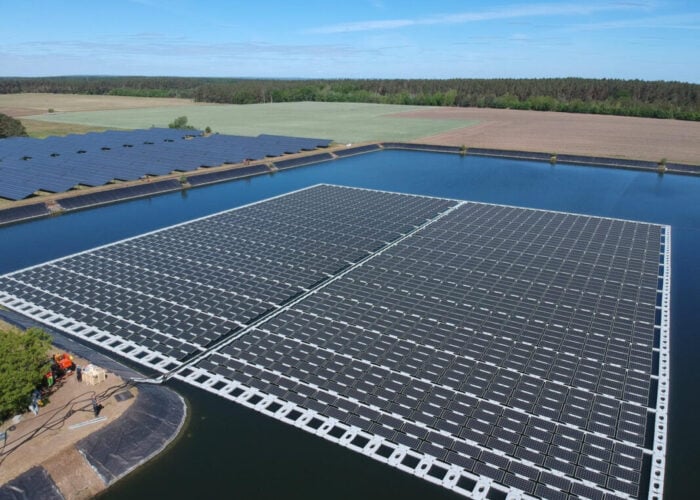One of the most ambitious solar power projects in the U.S. received the regulatory greenlight Thursday from the California Public Utilities Commission. The commission voted unanimously to approve Southern California Edison’s plan to install scores of 1-2MW photovoltaic grid-connected systems on the rooftops of commercial buildings throughout the utility’s Southern California service area.
Under the terms of the approved measure, SCE will own, install, operate, and maintain 250MW of PV panels in the next five years and will solicit bids from independent suppliers to deploy another 250MW, according to SCE spokesman Gil Alexander. Together, the added solar capacity will provide “enough electricity to meet the needs of up to 320,000 Southern California households.”
Unlock unlimited access for 12 whole months of distinctive global analysis
Photovoltaics International is now included.
- Regular insight and analysis of the industry’s biggest developments
- In-depth interviews with the industry’s leading figures
- Unlimited digital access to the PV Tech Power journal catalogue
- Unlimited digital access to the Photovoltaics International journal catalogue
- Access to more than 1,000 technical papers
- Discounts on Solar Media’s portfolio of events, in-person and virtual
The original proposal called for 250MW of SCE-owned and operated systems but was revised over the course of deliberations at CPUC during the past year.
Since prior to today’s decision, utility solar plans in the 1 to 2MW range had limited participation in the California Solar Initiative or Renewables Portfolio Standard (RPS) program, CPUC said that “Edison’s program creates a new avenue for developing such smaller-sized solar projects.”
Because SCE’s program is one of the first significant forays by a utility into ownership of renewable energy generation, CPUC said that it will “carefully monitor the program’s progress, examine ways in which the program can be improved, and fine-tune the program when and where appropriate.”
Alexander said the “rooftop solar plants will be connected directly to the nearest neighborhood circuit, eliminating the costly, time-consuming step of building new transmission lines to bring power to customers. Project costs will be about half of today’s average California Solar Initiative cost per installed watt because of economies of scale and solar technology advances.”
“The output of solar panels closely matches peak customer demand–lower in the morning and evening, higher in the afternoon,” he added, with “peak solar panel output matching peak customer demand.”
The first PV system, deployed on a ProLogics warehouse rooftop in Fontana, CA (see photos), came online in fall 2008 and “has been delivering power to the grid” since then, Alexander said. The 2.44MW (DC)/2MW (AC) system is comprised of 33,700 First Solar CdTe thin-film modules.
First Solar modules will also be featured on the program’s second rooftop array, a 1MW (AC) system being built in Chino, CA. “The current construction schedule calls for the Chino installation to be online in time to help meet this summer’s peak demand, which typically occurs during August and September,” the SCE spokesman told PV Tech.
He said that “by the end of the year, we expect to have the third roof and a total of 5MW (AC) online plus the groundwork laid with rooftop lease and supplier solicitations to ramp up to our full project deployment pace.
“We are in the final stages of negotiating the lease for the third roof and expect to have that installation complete and the power online by the end of the year,” he added. “No announcement has been made yet regarding the location or building owner.”
SCE plans to accelerate the deployment in the beginning of 2010, according to Alexander. “We expect to install approximately 50MW of additional generating capacity per year until we reach the 250MW project size.”
The utility is planning a competitive solicitation this summer for independent power producers to bid on the other 250MW of rooftop PV systems to be installed, owned, and maintained, he said, noting that the bidding process will be managed “just like our annual solicitations for new renewable generation of all types.”
The rooftop program will have the added benefit of putting more people to work. “SCE anticipates its solar project will create as many as 800 new green jobs in the solar industry,” Alexander said. “The International Brotherhood of Electrical Workers, one of SCE’s project partners, is supporting the project though the expansion of its solar apprentice training program.”
CPUC officials were unanimous in their praise for the new program.
“This program represents a valuable complement to the existing renewable procurement efforts we have under way, given the significant permitting challenges large-scale renewables face, both in terms of transmission and the generating facilities themselves,” said CPUC President Michael Peevey. “It represents an important hedging strategy by allowing for the deployment of distributed resources that, while somewhat more expensive than the large-scale renewable projects that are the primary focus of the RPS program, offer a much higher level of certainty in terms of when they will come online.”
“This decision is a major step forward in diversifying the mix of renewable resources in California and spurring the development of a new market niche for large-scale rooftop solar applications,” said the author of the decision, Commissioner John Bohn. “Unlike other generation resources, these projects can get built quickly and without the need for expensive new transmission lines. And since they are built on existing structures, these projects are extremely benign from an environmental standpoint, with neither land use, water, or air emission impacts.
“By authorizing both utility-owned and private development of these projects we hope to get the best from both types of ownership structures, promoting competition as well as fostering the rapid development of this nascent market.”
“This decision is good for California because it makes good use of all that sun and warehouse roofs in Southern California to produce clean energy right where we need it, both by Edison and independent generators,” commented Commissioner Rachelle Chong. “I commend Edison for its foresight in bringing a focus on commercial solar PV projects that are 1-2MW in size.”
“I support this decision because it strikes a balance between promoting utility-owned generation and competitive procurement for independent energy producers, as well as distributed generation and central station solar systems,” said Commissioner Timothy Alan Simon. “Finally, it will bring much needed economic stimulus to the Inland Empire.”






